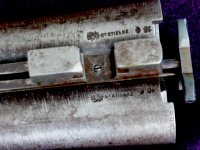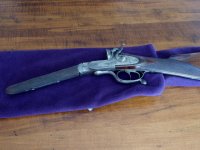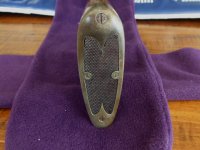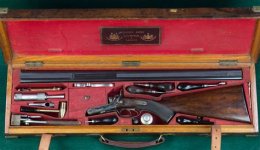I'm having a hard time figuring out what shotgun this is, the one i have is stamped St. Etienne on the rib, and that's all i can see. so i assume its build in France
i have searched this action on google lots and have found some really nice shotguns and double rifles built with the action.
but they are from all kids of different makers.
was it just a generic action that was sold to gun makers to build rifles/shotguns on?
it looks rifle Rigby and other big makers has build a few rifles on the action
if you look at the side plates, screw positions, the upper and lower tangs, the under lever, they seem to be identical
this seem to be the same action http://forums.nitroexpress.com/showflat.php?Cat=0&Number=388230&an=0&page=0#Post388230
this as well http://forums.nitroexpress.com/showflat.php?Cat=0&Number=386953&an=0&page=0#Post386953
there are loads of other examples out there.




i have searched this action on google lots and have found some really nice shotguns and double rifles built with the action.
but they are from all kids of different makers.
was it just a generic action that was sold to gun makers to build rifles/shotguns on?
it looks rifle Rigby and other big makers has build a few rifles on the action
if you look at the side plates, screw positions, the upper and lower tangs, the under lever, they seem to be identical
this seem to be the same action http://forums.nitroexpress.com/showflat.php?Cat=0&Number=388230&an=0&page=0#Post388230
this as well http://forums.nitroexpress.com/showflat.php?Cat=0&Number=386953&an=0&page=0#Post386953
there are loads of other examples out there.
























































































